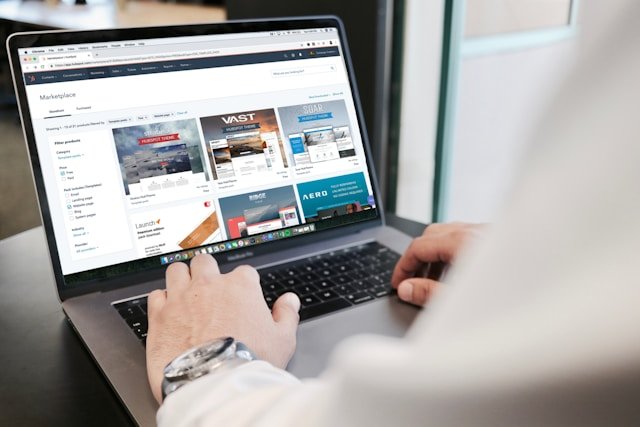Best Practices for Email List Segmentation
Email marketing still ranks at the top position of a marketer’s tool belt and sustains high ROI when it is done correctly. Email marketing largely depends on the relevance of content that is sent towards recipients. And this is exactly where email list segmentation comes into the play. In short, segmenting your email list is the act of breaking up subscribers into smaller and more defined groups based on specific criteria.
As a result, you can create custom tailored and highly relatable email campaigns which further increases the engagement rate, number of conversions, eventually creating more happy customers. This is a comprehensive guide to email list segmentation and how you can leverage this knowledge can generate the best results from your next campaign.
1. Understand the Importance of Segmentation
Why Segment Your Email List?
Why Segment Your Email List?
Email list segmentation turns your email database into a marketing tool that helps send specialized messages to smaller segments of subscribers, instead of just launching email campaigns with blasts. In fact, with the right segmentation and personalization, you might not need more than a top-of-funnel email series.
Providing your subscribers with the content that is specific and shows relevance to their interests, makes them engage more closely with your emails. It means high open rates, click through rate, and conversion from those Emails. Not only that, but segmentation can also help lower your unsubscribe rate as fewer subscribers will mark your emails spam and are more likely to remain on your subscription list.
Benefits of Segmentation
- Improved Engagement: because these are things that would, if they were targeted (given to the right audience) in an email make for a subject line that should allow it to be noticed more and likely opened. Keep in mind that emails are more likely to be opened and clicked on if they’re of direct interest and value to the subscriber.
- Increased Conversions: Send content specifically tailored to the interests and behaviors of each segment. This will lead to more conversions Offers, recommendations and CTAs customized specifically for the recipient’s needs and interest will always be more compelling in moving them to take action.
- Enhanced Customer Retention: Segmentation leads towards forming a bonding with your subscribers. Provide loyalty and repeat business: By continually providing relevant content, you can nurture loyalty chances of recurrence.
- Reduced Unsubscribe Rates: If your emails are helping your subscribers, they’re not going to want to stop receiving them. In return, you’ll keep your email list clean and its churn rate low.
2. Collecting and Analyzing Data
Gathering Subscriber Data
To do this well, you’ll need to have the right information about your subscribers. Well, there are a few ways of achieving this:
- Sign-Up Forms: Edit your form with specific headings and details, like full name, email address, location and so on. Don’t make your forms too long as this can overwhelm potential subscribers, but keep them detailed enough so you have the ability to segment.
- Surveys and Polls: Distribute or post surveys or polls to your current subscriber list via a channel about more granular information regarding preferences, habits, etc. These can be really useful insights to help you hone your segments.
- Website & Purchase Behaviour: Keep track of the interactions done by your subscribers with your website and the purchase history. This data can enable more specific segmentation based on their interests, preferences and buying behavior.
- Engagement Metrics: Keep track of how your subscribers behave with your email. Monitor and track their open rates, click-through-rates or any other metric, to see how they perform based on types of content. This will also help to filter the segments as per their engagement and liking for future purpose.
Analyzing Data for Segmentation
Analyze the data you’ve collected and see if there are meaningful segments. Identify and analyze the patterns, trends to add your subscribers to set groups of commonalities. Analyze tools and interpret their data with analytic tools to facilitate the creation of well defined segments. Demographics, geographic location or past purchase behavior (whether they have bought things from you before), even are they engaged with your emails and what they’ve told you about their interests
3. Segmentation Strategies
Demographic Segmentation
Dividing your email list on the basis of demographic information. It typically includes age, gender, income level and more fundamentally education and occupation etc. Geographic.
Segmenting a market on the basis of geography is applicable to those who deal in tangible goods and services that must be delivered at the customer’s place. It can also help businesses with products or services for specific demographic groups.
For example, the fashion retailer might define marketing segmentation based on men and women while the financial services firm could segment by income to promote different types of relevant products.
Geographic Segmentation
Geographic segmentation: Splitting your email list into multiple parts based on the location of the subscribers. This can be especially beneficial for businesses that operate out of physical locations and/or serve audience segments by providing location-specific goods or services.
For example, a restaurant chain could send out different promotions to subscribers in various cities. An e-commerce store can personalize the messages according to certain local holidays or events.
Behavioral Segmentation
Behavioral Segmentation: As the name implies, this is when you segment your email list based on subscribers’ prior behaviors. That can include past purchases, website interactions or how they have engaged with emails. Segmentation means you can run really specific, targeted campaigns as a result of this type of data.
Some sample segments you could establish include frequent buyers, lapsed customers for a specific period of time, or subscribers interested in particular products.
Behavioral factors can also be part of this segmentation such as purchase frequency, average order value, and loyalty or not.
Psychographic Segmentation
Psychographic segmentation is when you segment your email list based on the lifestyle, values, interests and personality of the recipient. It enables you to gain a more profound understanding of what inspired your subscribers thereby creating a fine-tuned content that drives more engagement.
A fitness brand, for instance, could set up its subscribers under segments that align with their preferred workouts: yoga lovers in one segment, runners another and strength training enthusiasts yet another.
Learning about the psychographic makeup of your list will help you write messages that are more closely aligned with their emotions, and may even make them feel as if they “found their people” on a spiritual level.
Life Cycle Stage Segmentation
Segmentation by lifecycle stage is when you subdivide your email list depending on where subscribers are in the customer journey. Examples include new subscribers, first-time buyers, repeat customers and lapsed customers.
Crafting messages that speak uniquely to the different needs and passions of subscribers at each stage in their journey can drive up engagement and conversion.
For example, a new subscriber may receive a welcome series while loyal customers might be rewarded with exclusive access to rewards or priority for new products.
Implementing Segmentation in Email Campaigns
Creating Tailored Content
After defining the segments, it’s time to write personalized content for each of them. In other words, the idea isn’t to tell different segments of completely different stories but rather to get messages and narratives that appeal precisely to their unique wants and needs.
As an example, if you have a segment of subscribers who buy outdoor gear on a regular basis, you could put together a campaign talking about new stuff in store for that category and combine it with performance-based recommendations considering their past buys.
Conversely, if you have a subset of subscribers that are interested in health and wellness, your messaging would likely be based around such topics as fitness training, recipes or any number of comfortable adjacent offers.
Personalization Techniques
and, of course, personalization is a lot more than addressing them by name. Simply put, it’s the process of using the data you’ve gathered to produce hyper-relevant, compelling content.
Use dynamic content blocks to customize other parts of your email based on the recipient’s segment. This might involve rewarding active customers with specific product suggestions or presenting location-based incentives, such as the chance to meet an expert in-store. (Also, don’t forget to try using tags such as first name in the subject line and or preheader.
This will improve open rates which is one of the most significant factors related to getting people to check your Mailchimp broadcasts.)
Testing and Optimization
Segmentation is not a thing-which-is-done-and-then-you-forget-about-it. Segmenting an audience means creating different power plays, which you should test and optimize continuously. It can also be helpful to A/B test different elements in your emails messages (like subject lines, copy and offers) to see what is the most resonant with each segment.
Review your performance on the divided campaigns regularly to find out what can be improved To be sure your knowledge of the recipient and segmentation strategy is effective, closely watch key metrics (open rates, click-through rates, conversion rates and unsubscribe rate). With these insights, revise your segments and your content to get improved outcomes.
Challenges and Solutions in Email List Segmentation
Data Quality and Management
(And if you’re still struggling to simplify your subscriber lists, then the biggest problem of them all is likely that your data isn’t up-to-date and it’s definitely not as accurate) Out of date, or simply inaccurate data could result in miss-segmentation and even an irrelevant message being sent out.
Control the quality of your data. Regularly install procedures to delete duplicate records, correct mistakes and add missing information.
Use preference centers and re-engagement campaigns to motivate subscribers to update their preferences and information periodically.
Balancing segmentations and resources
But as powerful as segmentation can be for your email marketing, it also means taking up more of your time and resources. Getting the right balance between segmentation and what’s achievable with your resource is key.
Begin with two or three key segments that will have the most tangible impact on your business goals and grow over time as you continue to build out your segmentation strategy. Automation tools can help in making the segmentation process easier and more organized.
Avoiding Over-Segmentation
It leads to hyper-granularity and, in practice, means more complex campaigns – as well as reduced effectiveness due to message dilution. It is important to strike the right balance and ensure unnecessary fragmentation of smaller segments, without losing manageability and focus.
Try to create meaningful ones that will give you useful insights for your email flows and help you better personalize the content.
Review your segments properly and update them periodically based on how different customers react to them or as customer behaviors change.
6. Conclusion
Segmenting it is one of the most powerful strategies to ensure that your email campaigns are as successful as they could be. Breaking down your list into smaller sections allows you to deliver more personalized and focused content that speaks directly to what they’re most interested or needs.
The successful segmentation has knowledge over the various types of segmentation, proper data management and analysis methods used for completion, creation as well as transaction of personalized content. Key to this success of course is navigating through the headwinds. data quality, resource management and falling into the over-segmentation trap.
Continuously testing, optimizing and refining your segmentation strategy will lead to higher engagement rates, increased conversion and a stronger relationship with your customer. We hope that you implement these best practices right away to realize the fullest power of email marketing.





